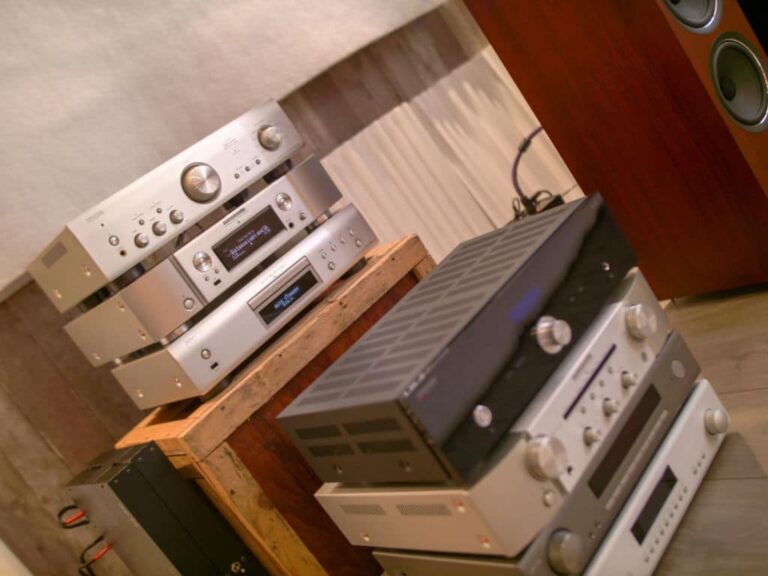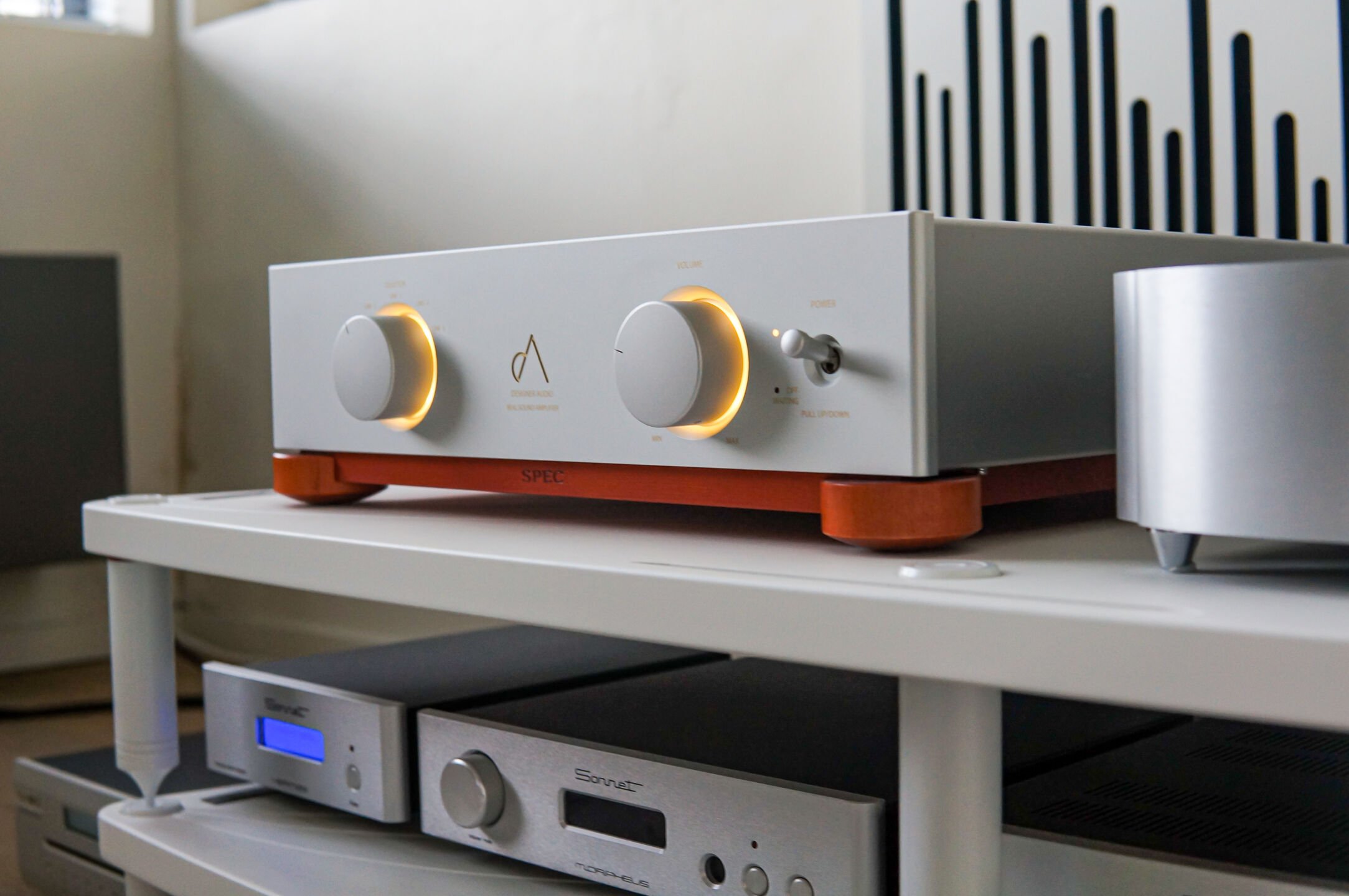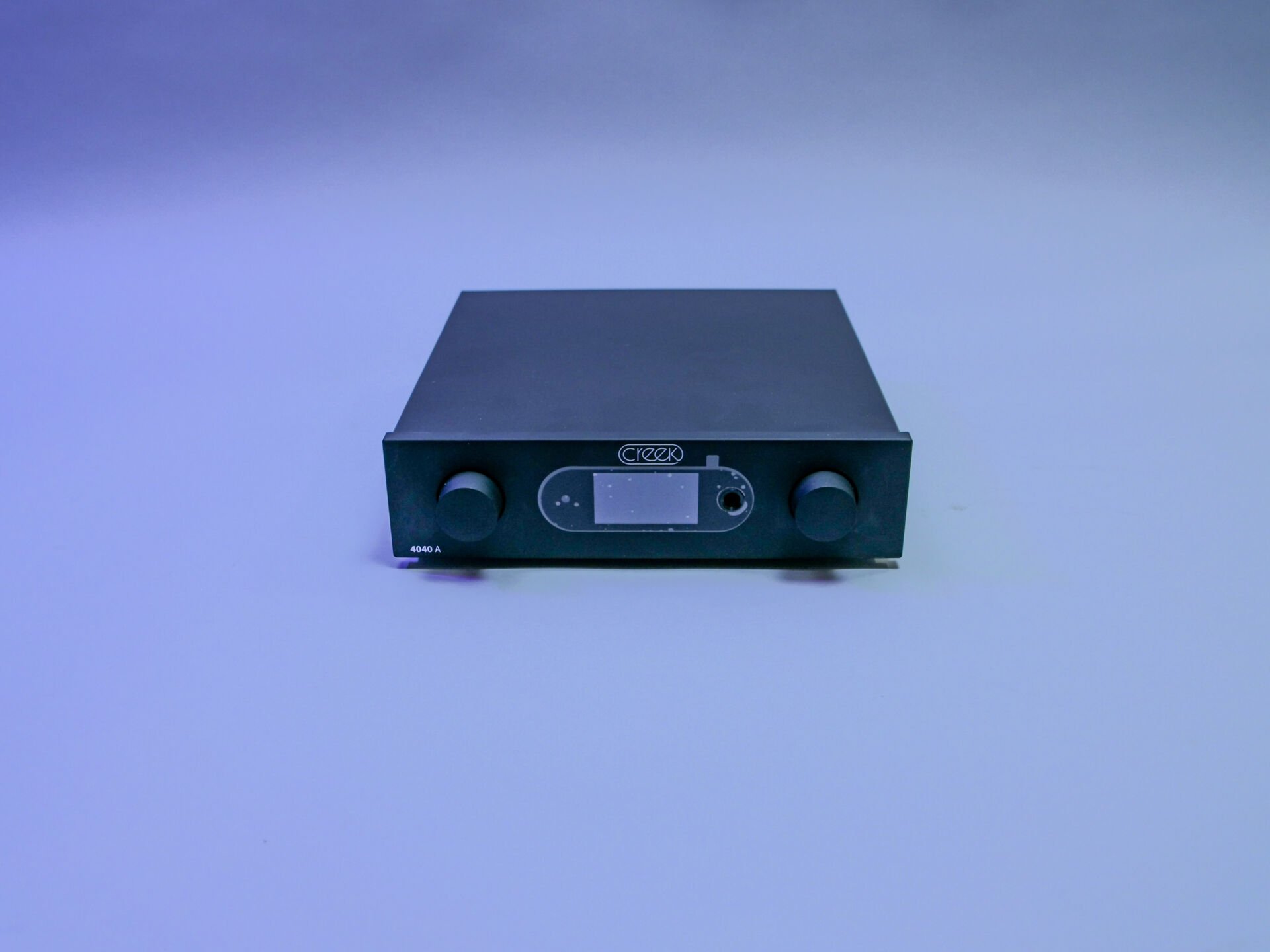

We get quite a lot of questions in our mailbox. And that’s nice. Because that way we know what’s going on with you! Some questions we get more often. Think about questions about amplifiers and speakers. In this series we try to make things clear for you. This time: which amplifier suits me?
The amplifier: the pumping heart in an audio system. The power station that ultimately has to set the loudspeakers in motion. A crucial part of the system. And with that. a part to think about very carefully.
It is therefore – not surprisingly – one of the most frequently asked questions: which amplifier fits my loudspeaker well?
In order to assess that question, we need much more information than the type of amplifier and speaker. You need to understand that a hi-fi system is more than a collection of components. It’s the combination of:
- Various audio components
- … and the match, including cabling
- Energy supply
- Acoustics
- Kind of music
- Loudness with which you play
- Your taste
- … even your mood
In short: there is a lot going on when it comes to the performance of an audio system. Much more than people think at first. Let’s break down the various amplifiers.
Integrated or separate?
There are basically three types of amplifiers:
- Preamplifiers (mono, stereo, multi-channel)
- Power amplifiers (mono, stereo, multi-channel)
- Integrated amplifiers (stereo, multi-channel)
What’s better can’t be said. That depends on many factors. There are amazingly good integrated models and there are very nice separate pre- and power amplifiers.
In theory, individual components are better, because each component has its own power supply and therefore does not ‘suffer’ from interference from other components. As a result – in theory – the noise floor, crosstalk and distortion is lower than with integrated models. However, with integrated models, the manufacturer can fine-tune the layout, and not unimportant: shorter signal paths are possible. Also, the best cable is no cable. And with a separate pre- and power amplifier, a set of cables is always needed. You see? Considerations!
In some cases, there may be an issue of ‘real estate’ in the living room. In that case, an integrated model is the only solution. Then know that there are definitely high-end integrated models. Every top manufacturer has a high-end solution.
Amplifier classes
And now some insights to tackle the eternal discussion: which amplifier class sounds best?
None. There is no preference at Alpha Audio anyway. Within each amplifier class are some beautiful sounding amps, and some ‘less beautiful’ models. It is also not necessarily the case that a certain classes have a certain ‘sound’. Class A is not necessarily warm or fluid sounding. Class AB doesn’t always have to suffer from crossover distortion either. And class D is not sharp, thin and frayed. It is even true that tubes do not have a ‘sound’: it is the tuning and the design of the manufacturer that gives the colouring. A tube is basically neutral. However, the loudspeaker may not match the design well, resulting in discoloration.
But that goes just as well for transistor amplifiers. Or class-D designs. Certainly older class-D designs have a filter at the end of the ride – so for the speaker terminals – which can have a huge impact on the music reproduction. This can result in sharpness and a ‘thin reproduction’. Maybe class-D amplifiers got a bad name because of that. Know, however, that new models suffer considerably less from this. Some models don’t even suffer from it at all (Purify).
So what we always recommend is that you listen. Try models without directly judging the ‘class’ of the amplifier. Class A, AB, B, D or even T… it doesn’t have to matter at all. Let your ears judge. Not the spec sheets.
Power and damping factor
“My speakers have 100 watts.” We see this line pretty often… And in itself, we understand this mistake. What the wattage on the loudspeaker means, is that on average this loudspeaker needs 100 watts of amplification to perform well. A loudspeaker does not have any power; the manufacturer provides a recommended power to play properly.
And even that’s mostly nonsense. We rarely look at power recommendations on the speakers. It’s just an indication. What is much more important than the power of the amplifier, is the stability of the amplifier. And stability can’t really be expressed. It depends on several things: design, power supply, overcapacity. And yes, some brands really take better care of this than others.
So what we usually look at in the specifications is supply capacity (expressed in VA), capacitor capacity (expressed in uF) and damping factor (expressed in… 100, 200, 1000, etc…but it is calculated with Ohm). This gives an indication of how tight and stable an amplifier is. Power can say something about how loud the whole – in combination with the efficiency of the loudspeaker – can play.
To explain something about damping factor… this is the internal resistance of an amplifier. The higher the damping factor, the lower the internal resistance. And the tighter the sound becomes. This manifests itself across the entire bandwidth, but will be particularly noticeable in the lower frequencies. This is because a loudspeaker often requires more control and grip in that area.
A damping factor always depends on the resistance of the loudspeaker. So if, for example, an amplifier has a damping factor of 1000 and the loudspeaker is 8 Ohm, this means that the internal resistance of the power amplifier is 0.008 Ohm. You will understand that the speaker cable also has an influence on this! Long cables actually always kill the damping factor. So keep that in mind: shorter really is better (in this case).
Matching tips
Enough specifications. Time for some advice. If you’re going to buy an amplifier:
- Take a good look at what you are looking for in terms of sound character
- Take a good look at what type – integrated or seperate components – suits you
- Take a good look at the efficiency of the speaker
- A low efficiency requires more power – and sometimes control – to play loud(er)
- A very high efficiency requires a little more matching (gets obtrusive quickly)
- Don’t look at amplifier classes: a class doesn’t always have a ‘sound’
- Above all, listen with your own speakers. Only then do you know if it really fits.
Q and A
What types of amplifiers are there?
Basically there are three types: preamplifier, power amplifier and an integrated amplifier.
What are amplifier classes?
An amplifier class says something about the method used for amplification. There is class-A, class-AB, class-B, class-D and some designers also use class-G and class-T.
Class-D is also sometimes called a digital amplifier, but this is incorrect. Class D is a form of pulse width modulation. This means that the supply voltage is modulated very quickly. That’s not digital technology. So a class-D amplifier is still an analog amplifier.
Do certain amplifier classes sound better?
No. Basically not. There are very nice class-A amplifiers, but also very bad ones. Just like there are nice and not so good class-D amplifiers. Let go of the idea that amplifier classes say something about the reproduction quality.
What is a tube amp?
A tube amp is an amplifier based on – yes – tubes. The term tube may be a bit confusing. A tube is in fact an amplifier. The tube contains – very simply explained – a cathode and an anode. A potential difference has been set on that. Heating causes a current to flow from the cathode to the anode. That current is in fact the amplified version of the music signal. Modern tubes work much better and can generate quite a lot of power.














